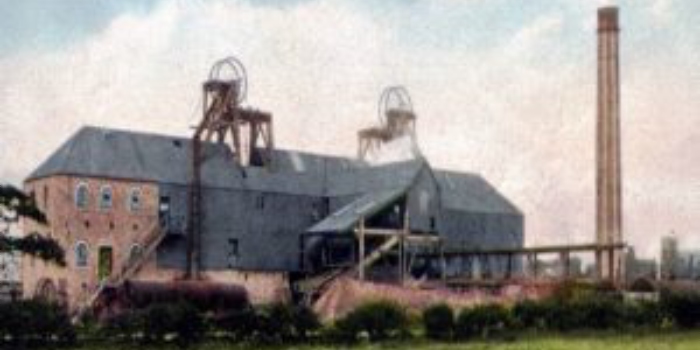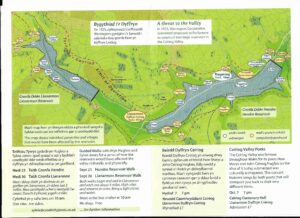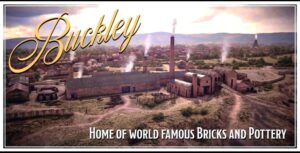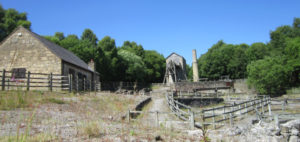Potteries, Brickworks and Collieries powered the engine of the town’s prosperity and fashioned the Buckley landscape. These industries have been determined by a corridor of clay and coal which runs across the district from Ewloe in the north to Padeswood in the south. Coal and clay were extracted from the surface in medieval times.
Potteries Thirty one have been recorded, the first in the mid-1400s, taxation records however record potters working in Ewloe in 1292. Some of the potteries produced very fine ware, the majority of the pottery produced however was earthenware fashioned from boulder clay for utility purposes. The turbulent intervention of two world wars and changing tastes finally tolled the death knell for the potteries by the mid-20th century.
In the 1970s and early 1980s, a dedicated group of archaeologists including James Bentley and Martin Harrison excavated and preserved the richness of the pottery and brickwork heritage throughout Buckley and valuable work was done to record and retain as much of the historic detail as possible before it disappeared under housing and other developments. In addition, very recent professional archaeological digs prior to developments have revealed and recorded details of sites which would otherwise have been lost to us. Many examples of pottery produced in Buckley are available to view in the Heritage Centre above Buckley Library.
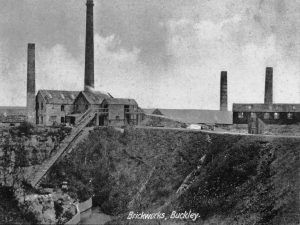
For detailed reading see www.cpat.org.uk/resource/reports/cpat1246.pdf
Collieries The abundant source of good quality coal fuelled the kilns of the potteries and brickworks. According to the 1881 Census, 762 people worked in mining compared to 359 in brick making. At one time there were over thirty collieries of various depths, some of them run in combination with the brickworks. John Summers Steelworks owned the Buckley Colliery Company, which bought most of the collieries and used much of the coal for the furnaces at Shotton Steelworks. The Buckley Colliery Company closed before 1935.
Brickworks Canalisation of the River Dee in 1737 provided an immense opportunity for the expansion of the clay and coal industries at Buckley as along with the growth of the railways; it provided a quick and efficient way of transporting heavy goods out of Buckley. The former wooden and metal narrow gauge tramways became main gauge railways with many of the burgeoning brickworks having their own sidings. The twenty-five brickworks established between about 1760 and the mid-1860s dominated the town: some were short-lived affairs but others flourished. By the start of the 20th century, there were nineteen firms in business. By 1950, this had diminished to eleven. The surnames of the entrepreneurs who owned or managed these brickworks became the means of identifying some of them. e.g. Davison’s Bottom and Top, Parry’s, Catherall’s, Hancock’s: some others – Standard, Castle, Globe, Etna, Belmont, Drury, Brookhill. Between them they produced a great variety of high quality brick products which in great demand particularly during the Industrial Revolution and were exported all over the world.
The last brickworks in Buckley was at Lane End: it had been established in 1792 by John Rigby and William Hancock. In 1956 it became the property of the Castle Firebrick Company who also took over several of the other brickworks. Butterley took it over in 1971 and at its closure, announced in February 2003, it was owned by Hanson’s. It had been one of the biggest and earliest in the area, and the last one to close in Buckley. The last chimney in Buckley was demolished at Lane End Brickworks on the morning of Friday 26th November 2004. It marked the end of a 250-year era of robust and prosperous industry for the town.
Compiled by Carol Shone Archivist www.buckleysociety.org.uk
Blog articles will only appear in the language they are provided in by the author.
Yn yr iaith y’u hysgrifennwyd gan yr awdur yn unig y bydd yr erthyglau blog yn ymddangos.

